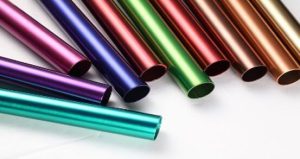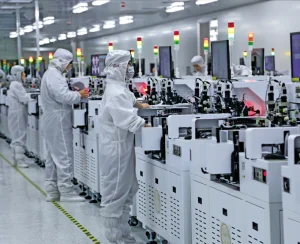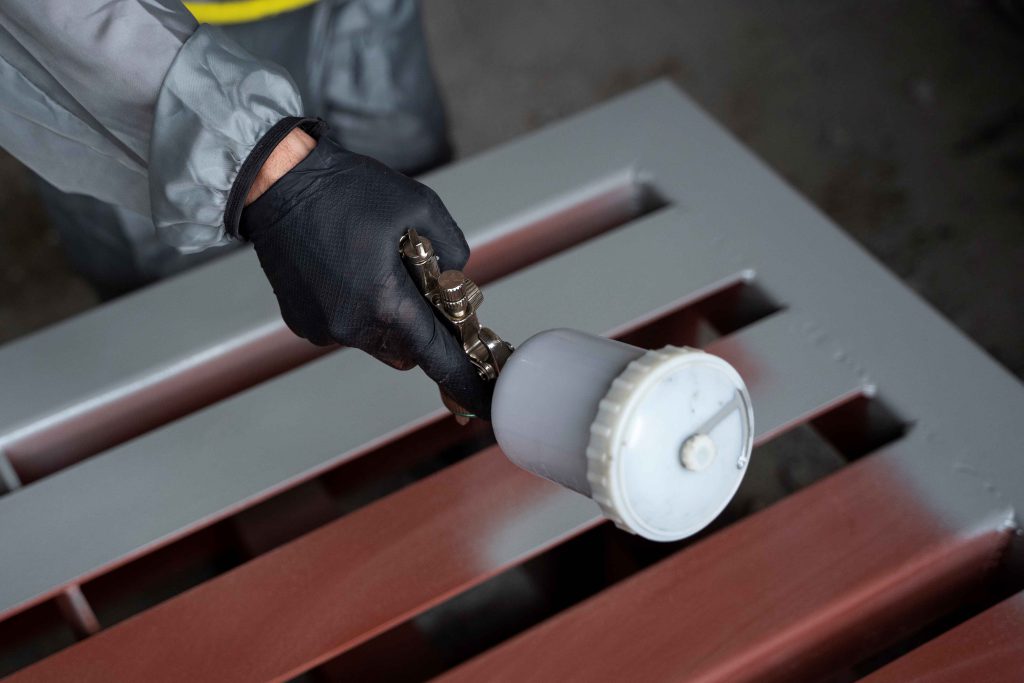In the field of coating techniques and surface finishing, Physical vapors deposition (PVD) and Electrophoresis stand out as two widely adopted processes. But both processes vary in terms of materials and tools used.
What is PVD Coating?
The process where the tool is placed in a vacuum chamber with the coating material is called PVD coating. The coating material is then vaporized and applied to the tool as a coating. To ensure the tool is completely coated, it is rotated and repositioned during the PVD process.
What’s unique about PVD is that the coating becomes part of the mold. Where most mold coatings crack or wear with time, PVD mold coatings form an atomic bond with the tool that can’t easily be broken.

Common PVD Coating Materials:
Common PVD coating materials are titanium, zirconium, aluminum, stainless steel and copper, though gold for aerospace electronics is often requested.
Applications of PVD Coating:
Tools and Cutting Instruments:
To enhance the hardness and wear resistance of cutting tools and dies, PVD coatings are used.
Decorative Finishes:
To provide aesthetically pleasing and durable finishes on consumer electronic devices and watches, PVD coating is used.
Protective Coatings:
PVD also offers excellent resistance to corrosion and wear, making it suitable for aerospace and automotive components.
Advantages of PVD Coating:
High Durability:
For its exceptional hardness and the quality of wear resistance, PVS coating is well-known.
Environmental Friendliness:
PVD coating is more cleaner and environment friendly compared to other techniques.
Superior Adhesion:
PVD provides excellent adhesion to the substrate, which results in a long-lasting coating. So, it’s Long-lasting and durable process.
Limitations of PVD Coating:
Along with a lot of advantages, there are also some limitations or shortcomings of PVD coatings.
Complex Process:
The vacuum environment and high temperatures involved can limit the size and shape of the components that can be coated.
Higher Costs compared to other techniques:
Due to the complexity of the process and equipment required, PVD coating is generally more expensive.
What is electrophoresis?
Electrophoretic coating is a coating method that uses an external electric field to make particles such as pigments and resins suspended in the electrophoretic solution migrate in a direction and deposit them on the surface of one of the electrodes.
Common Electrophoresis Materials:
Common electrophoresis coating materials are Steel, Aluminum, Magnesium, Zinc, Copper, Stainless Steel and Alloys.

What is the Principle of Electrophoresis?
The principle of electrophoresis is: under the action of the applied voltage, the electrophoretic paint is at the cathode and anode, and the charged paint ions move to the cathode and interact with the alkaline substance generated on the cathode surface to form insoluble matter, which is deposited on the surface of the workpiece.
The electrophoretic coating generally has at least four effects:
- Electrophoresis
- Electrodeposition
- Electrolysis
- Electroosmosis
What Are the Characteristics of Electrophoresis?
Electrophoretic paint film coating is uniform and smooth. The electrophoretic paint film outperforms other coating methods in terms of hardness, adhesion, corrosion resistance, impact performance, and penetration performance.
Advantages of Electrophoresis:
Environment friendly:
Using water as the dissolving medium saves a lot of organic solvents, reduces air pollution and environmental hazards, is safe and hygienic, and avoids the hidden danger of fire.
Less loss and more efficiency:
The coating efficiency is high and the coating loss is small. The utilization rate of coatings can reach 90% to 95%.
Strong adhesion:
The coating film has strong adhesion, uniform thickness, and good coating quality. A uniform and smooth paint film can be obtained on all parts of the workpiece, such as inner layers and depressions.
Automatic production:
High production efficiency and automatic continuous production can be realized.
Limitations of Electrophoresis:
More electricity consumption and difficult to manage:
Wastewater treatment is necessary, the equipment is complicated, expensive to invest in, consumes a lot of electricity, requires a high temperature for drying and curing, is difficult to manage for paint and coating, and has strict construction conditions requirements.
Unstable for long time storage:
Only water-soluble paints should be used, and the color should not be changed during the painting process. If the paint is stored for a long time, the stability is not easy to control.
Electrophoresis vs PVD coating
PVD (Physical Vapor Deposition) coating and Electrophoresis are two different surface treatment methods for metal parts and plates.
PVD involves vaporizing a solid material, usually a metal, in a vacuum, then depositing it as a thin film onto the metal surface, creating a hard, durable, and often decorative finish. It is mostly used for corrosion resistance, aesthetic finish and enhancing hardness as discussed above.
On the other hand, Electrophoresis is a process where a charged liquid paint or coating is applied to a metal part by immersing it in a bath and using an electric field to draw the coating to the surface. It is particularly used for industrial arts and automotive because it provides a uniform and corrosion-resistant coating, mostly used as primer or final finish.
Which is more Cost effective?
As Compared to PVD coating, Electrophoresis is more cost-efficient. The electrophoresis process requires less expensive equipment and materials, making it suitable for large-scale applications like automotive and industrial parts.
While offering better aesthetics and superior durability, PVD coatings tend to be more expensive due to higher precision involved in process and specialized vacuum equipment used.
Therefore, if we consider cost a primary concern, electrophoresis is typically the more economical choice.

For more information about electrophoresis and PVD coating techniques, and for your customized metal part fabrication, contact Lydia.sales1@tmnetch.com.

